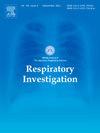Key predictors of long-term survival after lung transplantation in Japan
IF 2
Q2 RESPIRATORY SYSTEM
引用次数: 0
Abstract
Background
Lung transplantation (LTx) is essential for treating end-stage lung diseases in Japan, achieving favorable long-term survival despite donor shortages. However, factors associated with long-term survival after transplantation remain unclear. This study aims to identify key predictors influencing post-transplant outcomes.
Methods
A retrospective analysis was conducted on LTx recipients at Tohoku University Hospital from 2000 to 2019, with a follow-up period of five years to 2024. Recipients were categorized into short survivors (<5 years) and long survivors (≥5 years). The analysis focused on recipient demographics, donor characteristics, surgical factors, and post-transplant outcomes.
Results
Of 124 recipients, 36 were short survivors, and 88 were long survivors. Long-term survivors were younger, with a lower prevalence of patients aged 55 years and older. Additionally, fewer long-term survivors received lungs from critically marginal donors compared to short-term survivors. CMV serology was a significant factor, with a higher incidence of CMV disease observed in short-term survivors.
Conclusion
The study identified younger age, selective donor use, and CMV status as key predictors associated with long-term survival after LTx in Japan. The findings underscore the importance of targeted CMV management strategies and suggest that future multicenter studies with larger, more diverse populations are needed to confirm these results and further enhance long-term survival outcomes.
日本肺移植术后长期生存的关键预测因素
在日本,肺移植(LTx)对于治疗终末期肺部疾病至关重要,尽管供体短缺,但仍能获得良好的长期生存。然而,与移植后长期存活相关的因素仍不清楚。本研究旨在确定影响移植后预后的关键预测因素。方法回顾性分析2000年至2019年在东北大学医院接受LTx治疗的患者,随访5年至2024年。接受者分为短期幸存者(5年)和长期幸存者(≥5年)。分析的重点是受体人口统计学、供体特征、手术因素和移植后结果。结果124例患者中,短期存活者36例,长期存活者88例。长期存活者较年轻,55岁及以上患者的患病率较低。此外,与短期幸存者相比,更少的长期幸存者接受了临界边缘供体的肺。巨细胞病毒血清学是一个重要因素,在短期幸存者中观察到较高的巨细胞病毒发病率。结论:该研究确定了年龄较小、选择性供体使用和巨细胞病毒状态是与日本LTx术后长期生存相关的关键预测因素。这些发现强调了靶向CMV管理策略的重要性,并表明未来需要在更大、更多样化的人群中进行多中心研究来证实这些结果,并进一步提高长期生存结果。
本文章由计算机程序翻译,如有差异,请以英文原文为准。
求助全文
约1分钟内获得全文
求助全文

 求助内容:
求助内容: 应助结果提醒方式:
应助结果提醒方式:


